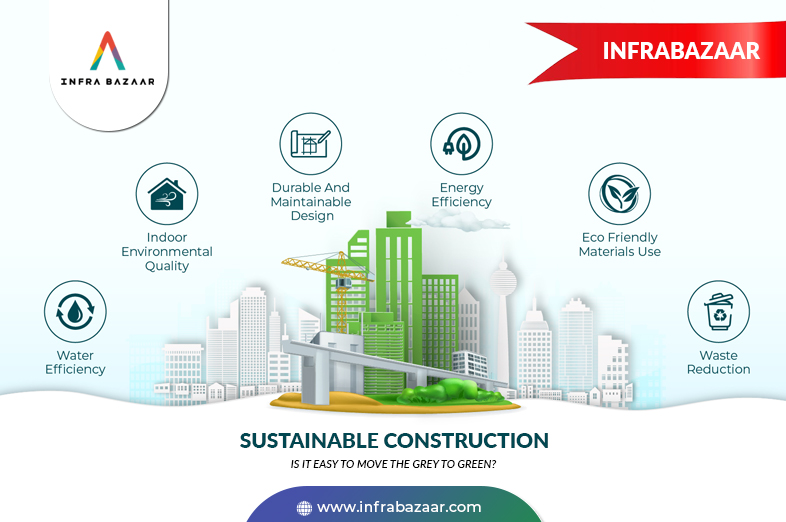
Posted By:Infra Bazaar
There is a lot of talk around sustainable construction in alignment to the new government set SDG’s and ESG’s. In this article Infrabazaar explores a few aspects for frictionless adaptation of these methods.
What does sustainable construction mean? Energy efficient and reduced carbon footprints? Renewable materials? or even reduced labour. This industry is generally one of the largest contributors to any country’s GDP and has since also employs the maximum number of resources. Further the industry uses the maximum natural resources and its imperative that in the need for progress we do not deplete our natural reserves.
So, what should the focus be to streamline the industry and not make it a loss of livelihood or a means of repeat work/accidents due to lack of awareness with the new systems. With renewable sources, if they are cost effective, then some industries and materials can be rendered obsolete and the cost of educating the masons and operators also need to be accounted for. It is observed that majority of the costs associated with new materials is not just the technical viability but also the ease of use for the stakeholders and the cost savings associated over the years.
A couple things to definitely focus on for frictionless integration into everyday usage:
All stakeholders NEED to be on the same page. The idea is to increase the lifespan of constructions and not be an adhoc based on the construction partner or changing governments and decision makers. In terms of sustainability this becomes critical to increase the lifespan.
Be it exact usage materials or proper planning/review to avoid repeat work, to segregating waste, proper disposals and many other small steps that are inculcated as a habit for ALL personnel on sites. Thus far, we have always worked with the principle of excess as there is minimal to no cost associated to the natural resources.
So yes! There are innumerable more technical specifications and aspects of switching to more sustainable methods that one needs to address and explore. However, the good thing is that within the industry the movement has definitely begun and it is clear that the solution will not be a one size fits all.
#sustainableconstruction #renewablematerials #energyefficiency #collaboration #wastereduction #frictionlessadaptation #increasedlifespan #Infrabazaar